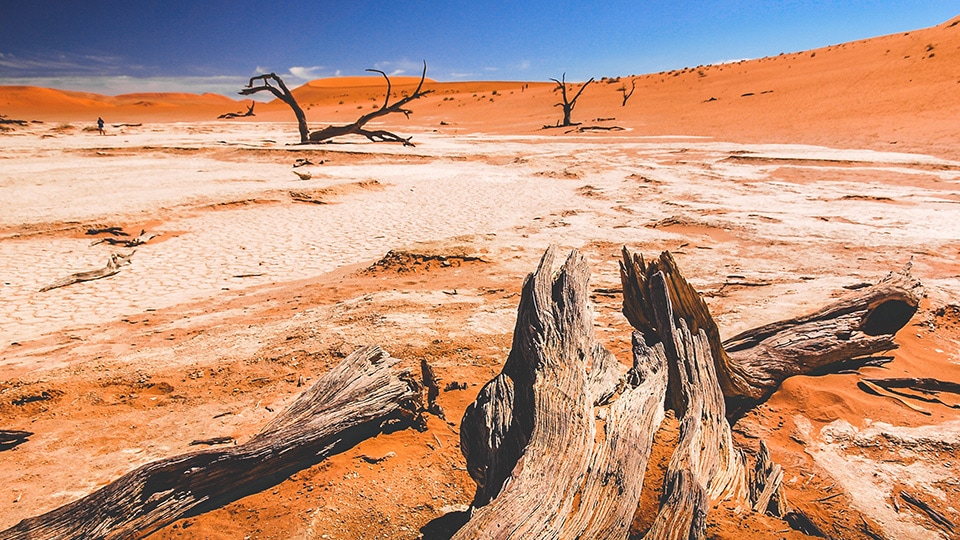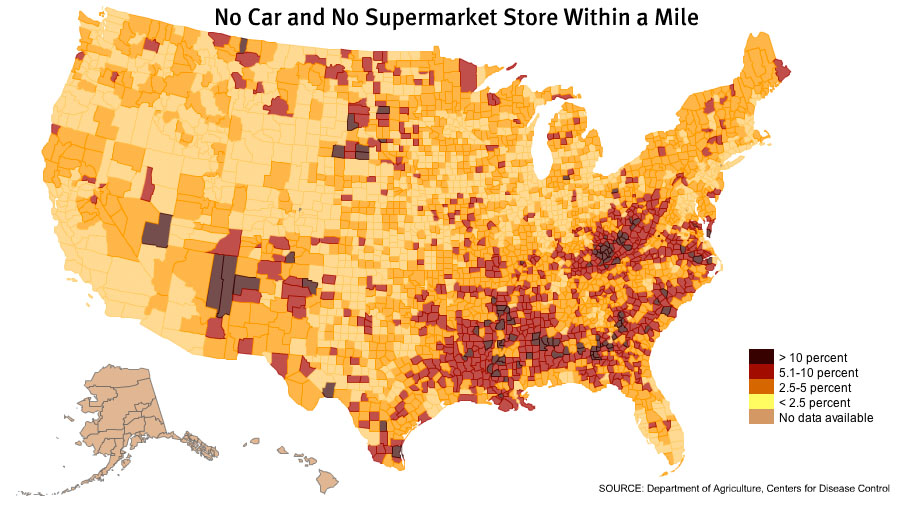Seeking a Solution to Food Deserts and Poor Nutrition
/ on /
While living in a secluded section of Vermont for a few years in college, I spent a frequent amount of time in two areas in the state, the Green Mountains and the Valley of Vermont, that are at least a 30 minutes journey—or much more depending on road conditions and weather—to the nearest grocery store. To get the food needed for a week or more, residents in this part of the state would have to plan trips in order to get the staples we take for granted in metropolitan areas.
The only reprieve from this would be the small local markets that some of the mountain hamlets might have—if they were lucky. The problem with doing all your shopping through the local provisions purveyor is that these type of small shops don’t often carry the freshest, healthiest foods.
Until recently, I didn’t know there was a name for this phenomenon—“food desert”—which is recognized by organizations such as the U.S. Department of Agriculture.
According to the USDA, a food desert is an area of the country where it is difficult to get fresh fruit, vegetables, and other healthy foods.
Food deserts are usually found in the more geographically isolated and impoverished regions of the country, and their existence has to do with the problems I saw in small Vermont mountain towns: a lack of grocery stores, farmers’ markets, and healthy food providers. However, urban areas too can be considered food deserts if they have a higher prevalence of junk food-filled convenience stores versus places to buy fresh produce.
What I observed in Vermont isn’t an ideal example of a food desert, as this problem tends to be more significant in more rural and poor areas that get stuck in a cycle of developing unhealthy eating habits due to the lack of healthier and affordable options.
As the USDA explains, it is a “big problem because while food deserts are often short on whole food providers, especially fresh fruits and vegetables, instead, they are heavy on local quickie marts that provide a wealth of processed, sugar, and fat laden foods that are known contributors to our nation’s obesity epidemic.”
There is even a USDA-developed map that identifies the food deserts across the U.S.
Part of the ButcherBox mission is making sure everyone has access to healthier foods, at prices that are more palatable to a wide swath of Americans. A ButcherBox monthly subscription, which averages out to $6 per meal, is on par with what it would cost for a pound of conventional ground beef in most areas of the country.
This is something the entire ButcherBox team cares deeply about. That’s why ButcherBox believes that access to better meat, by shipping directly to customers, is important. ButcherBox has the potential to improve the lives of those unfortunate enough to live in a food desert, whether that is in the suburb of some major metropolitan area, out in the middle of nowhere, or even in those isolated areas of Vermont.
Grass-Fed Beef Guide
Table of Contents
About Grass-Fed
- What is Grass-Finished Beef?
- Grass-Fed vs. Grass-Finished
- Grass-Fed vs. Grain-Fed
- 100% Grass-Fed Beef vs. Organic Beef
Benefits of Grass-Fed
- Grass-Fed Beef Benefits
- Grass-Fed Beef in the Most Popular Diets
- Is Grass-Fed Beef Better for the Environment?
Buying Grass-Fed
- Grass-Fed Beef in America
- Why It Is Difficult to Find Butcher Shops
- How to Buy Grass-Fed Beef with No Stores Nearby
Cooking & Eating Grass-Fed
Dennis Keohane is the Editorial Director for ButcherBox.



